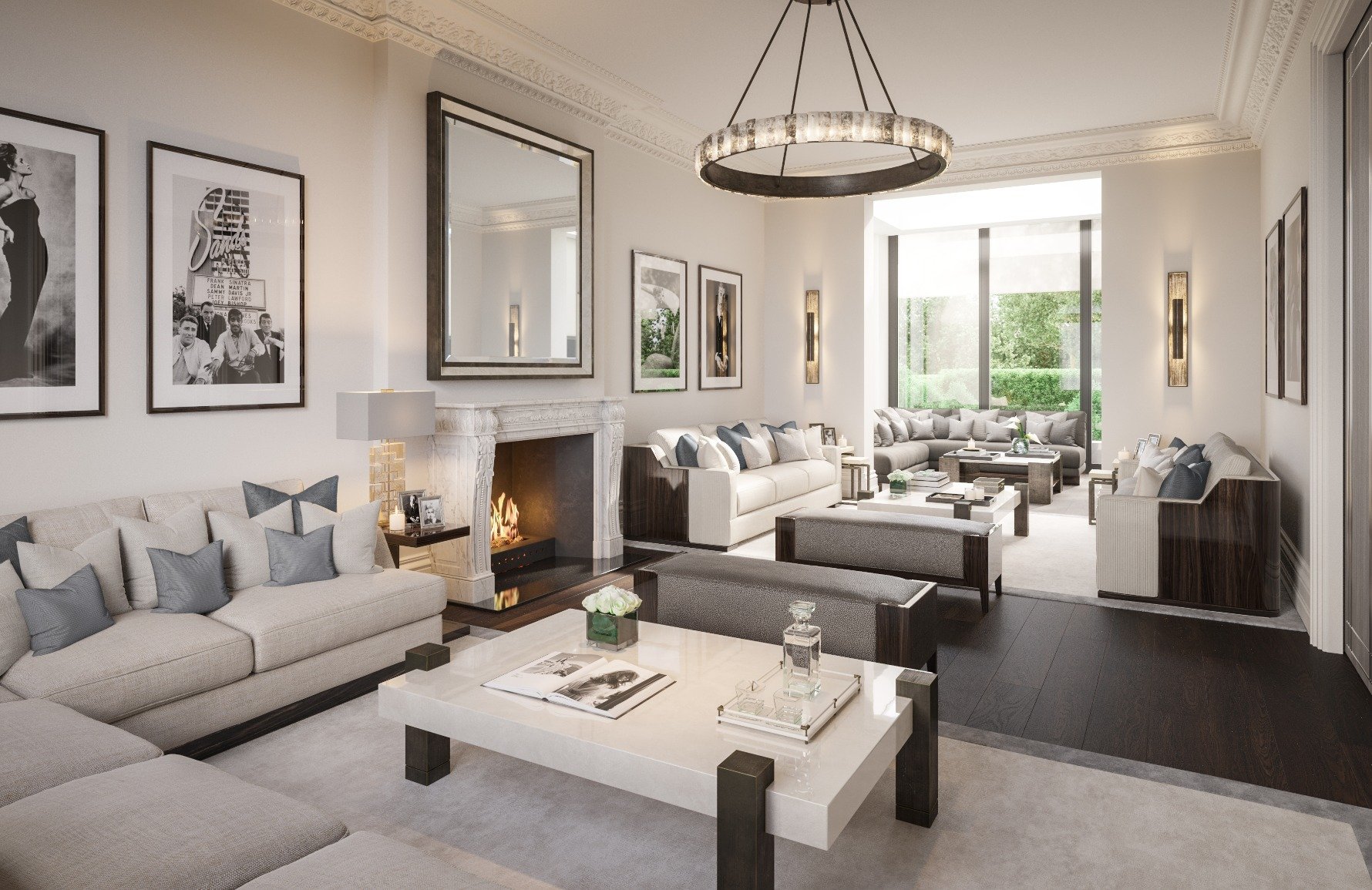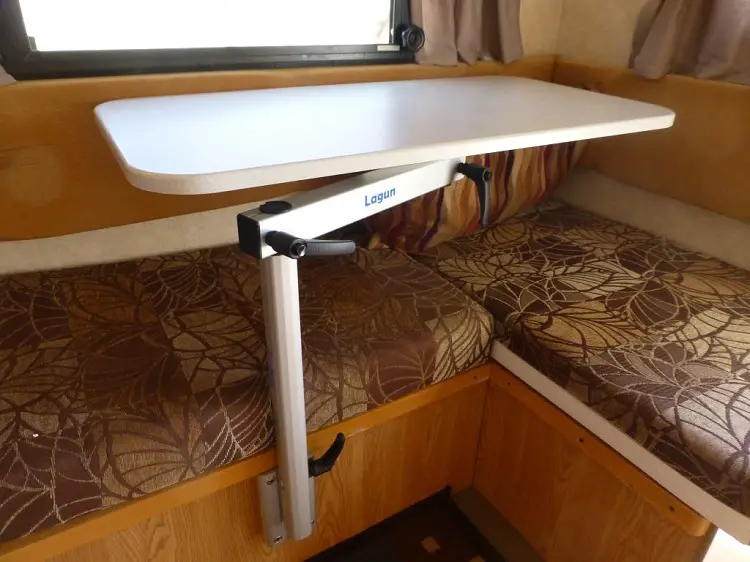Organizing and storing items within a home kitchen is essential for a space to feel comfortable and efficient. Ergonomic considerations can help you make the most of your kitchen storage solutions, with appropriate placement of items and correctly sized cabinet and drawer components. Shelving is an important place to begin, but don’t forget to take into account the size and distance of other cabinets and drawers. For efficient storage, no item should be more than an arm’s reach away, and the items you use most often should be stored in the most convenient places. When organizing cabinets and drawers for an ergonomic kitchen setup, think about the items that you store in each. It helps to group similar items together (such as grouping all cutting boards in one dedicated space). This will save you time from having to search for items and make it easier to put things back. Additionally, you can purchase divider inserts to keep items organized and separated.Ergonomic Storage Solutions in the Kitchen
The color of your kitchen can have an effect on how it feels. The right color can make it seem more inviting, efficient, and even increase your appetite. When designing an ergonomically efficient home kitchen, one should take into account both paint color and surface finishes. A good rule of thumb is to choose a shade that makes you feel comfortable and at ease. Consider pastel or light colors, and avoid colors that are too bright or garish. For the walls, use paint that is light in color and easy to clean. For countertops, tile, floors, or any other finish, choose a color that creates a visual harmony with the other elements of the room. Additionally, materials with reflective qualities can be used to add brightness and depth to the kitchen. This can allow you to use lighter colors in smaller areas, such as cabinets and drawers.Incorporate Color in Your Home Kitchen
In order to accommodate larger items and ensure the best access to items stored in cabinets, installing a larger door is the best way to go. Even if you only choose to install one larger door, it should still provide an easier way to access items stored inside. Another important aspect of cabinet doors and drawers is to place handles in the middle of the door itself. This will allow you to open it with less effort and using both hands. Even if you don’t add handles, you should ensure cabinets and drawers have pulls on them for easier access. In addition to the door and drawers themselves, knobs and other hardware should be selected for better ergonomics. Choose knobs that are easy to grab and are comfortable to grip, choose handles that are not too large or bulky, and pick ones that won’t be difficult to open with one hand. Improving the Ergonomics of Cabinet Doors and Drawers
An ergonomic kitchen should have countertops that are efficient, easy to move around in, and provide easy access to essential items. Items that are used regularly, such as cutting boards, knives, and other tools, should be easily accessible without needing to move anything. Moveable kitchen islands and countertops can help divide the space and provide an efficient way to store items, and they also make it easier to prep meals. If you want to maximize the utility of your countertops, choose a countertop with built-in organizational features. If you don't have the budget to install a large countertop, there are plenty of smaller countertop accessories that can be used to make the best use of your space. Consider a small storage unit, hanging shelves, or even a bar cart.Maximizing Kitchen Countertop Efficiency
The best kitchen designs are those that take into account easy access to items stored in and around the kitchen. Pull-out shelves, pop-up cabinets, and countertop organizers are all useful items for those with limited storage space. Keep items at an appropriate height, taking into consideration the user’s reach. Consider adding pull-downs or swivel shelves that can be used easily and limit the need for reaching or stretching. If you or someone in your home has limited mobility, consider installing items with automated openings, such as an automated pull-down shelf or motorized cabinet doors. Make sure to choose items with handles, knobs, and other components that are easy to grip and don’t require too much force to open. Additionally, choosing lower profile countertops can help improve accessibility, as the items stored on them will be easier to reach and use.Improving Accessibility in the Kitchen
Adding ergonomic features to your fixtures and appliances can help make them more efficient and easier to use. Appliances such as refrigerators, dishwashers, and ovens should be installed at the correct height so that you can comfortably and safely use them without having to strain or stretch to reach them. Consider installing an adjustable oven rack, built-in cutting board, or even adjustable shelves in refrigerator doors. Fixtures can also benefit from ergonomic design, with items such as sinks and toilets being trimmed with furniture-grade finishes and anti-microbial materials. Easy-to-clean materials such as stainless steel, and items with quick-connect components can help speed up cleaning time and reduce strain. Additionally, the items you use every day in the kitchen should be easily accessible and comfortable to use.Ergonomic Fixtures and Appliances
The layout of a kitchen can have an effect on the efficiency and comfort level of the space. To create an ergonomic kitchen, it is important to consider how you use each area of the kitchen. The stovetop should be close to the sink and countertop, and it should be fitted with the proper safety precautions. In addition, it should be installed at the right height in order to minimize strain and make access to commonly used items easy. The refrigerator should be placed near the stovetop as well, and possibly near the pantry or other storage area to make accessing ingredients easy. The countertops should be easy to move around in, and installed at the right height for easy access. Additionally, thhe kitchen should also have enough room and a good lighting system set up for easy meal prep.Choosing an Ergonomic Kitchen Layout
An ergonomic kitchen should also feel comfortable and inviting, with lighting and air flow taken into consideration. Ample and comfortable lighting should be provided throughout the kitchen, as well as a well-ventilated air flow system. Look for energy-efficient LED overhead lights, as well as task lights that will help you focus on specific tasks. It can also make a difference in the kitchen atmosphere to decorate it with inviting pieces. Hang artwork that is light and airy, or add plants which can help to freshen the air. A few touches such as cushions and soft rugs can make the kitchen more inviting and comfortable to work in. Placement of furniture, such as chairs and benches, can also help to optimize the kitchen for comfort.Optimizing the Kitchen Environment
The ergonomic design of a home kitchen can provide a lot of benefits. An ergonomic kitchen can be more efficient, comfortable to use, and can even reduce fatigue and strain. Properly laid out drawers, cabinets, and countertops can make life easier and help reduce stress by ensuring that tools and items are easily accessible. The ergonomic design of fixtures and appliances can also make them more enjoyable and easier to use. Incorporating features such as ample and comfortable lighting, inviting decorations, and well-ventilated air flow can help to make an ergonomic kitchen feel warmer and more inviting. Taking the time to design a kitchen that fits specific needs is essential for an ergonomic design that will last for years to come.Discover the Benefits of an Ergonomic Home Kitchen Design
No matter how efficient or beautiful a kitchen may be, it still needs to be a safe place for everyone. Creating a safe kitchen includes using up-to-date plumbing and electrical systems, installing safety features in appliances and fixtures, and keeping items away from sharp edges and hot surfaces. Additionally, keep hazardous items out of reach of smaller children and add safety locks or covers to accessible drawers and cabinet doors. In addition to safety, create a comfortable atmosphere in the kitchen. Adding small decorative touches, such as perfectly placed kitchen towels, mugs, and stirring spoons can make the kitchen feel homey and inviting. Additionally, adding cushioned chairs or benches can provide a relaxing spot to take a break and enjoy a cup of tea or a simple snack. Creating a Safe and Comforting Home Kitchen
ergonomics in Home Kitchen Design
 Ergonomics in home kitchen design is the practice of positioning elements and appliances that are integral to a functional kitchen in a way that maximizes both efficiency and safety. Good ergonomics in a home kitchen create a comfortable, usable space, and reduce the strain of everyday tasks.
Ergonomics in home kitchen design is the practice of positioning elements and appliances that are integral to a functional kitchen in a way that maximizes both efficiency and safety. Good ergonomics in a home kitchen create a comfortable, usable space, and reduce the strain of everyday tasks.
Improving Efficiency
 The placement of items in the kitchen is key in improving efficiency during food preparation and meal clean-up. Placing items in convenient locations reduces the amount of reaching, bending, and stretching required, making tasks such as cooking, baking, and dishes easier on both the body and mind. For example,
countertop appliances like food processors or microwaves
should be located in a space that allows them to be easily accessed. Likewise, items like plates, glasses, and silverware can be stored in cabinets or drawers that are within easy reach.
The placement of items in the kitchen is key in improving efficiency during food preparation and meal clean-up. Placing items in convenient locations reduces the amount of reaching, bending, and stretching required, making tasks such as cooking, baking, and dishes easier on both the body and mind. For example,
countertop appliances like food processors or microwaves
should be located in a space that allows them to be easily accessed. Likewise, items like plates, glasses, and silverware can be stored in cabinets or drawers that are within easy reach.
Aesthetic Appeal
 Good ergonomics in home kitchen design should also considered the aesthetic of the space.
Kitchen layouts
should allow for easy access to different areas of the kitchen such as the fridge, sink, and oven/stove without overcrowding the area. Keeping clutter and excess items to a minimum can help ensure that accessible pathways for cooking and cleaning are maintained. Practical elements like roll-out storage near the counter and adjustable corner cabinets, where items can be stored at different heights, can also help keep the space efficient and organized while maintaining an attractive appearance.
Good ergonomics in home kitchen design should also considered the aesthetic of the space.
Kitchen layouts
should allow for easy access to different areas of the kitchen such as the fridge, sink, and oven/stove without overcrowding the area. Keeping clutter and excess items to a minimum can help ensure that accessible pathways for cooking and cleaning are maintained. Practical elements like roll-out storage near the counter and adjustable corner cabinets, where items can be stored at different heights, can also help keep the space efficient and organized while maintaining an attractive appearance.


























































































